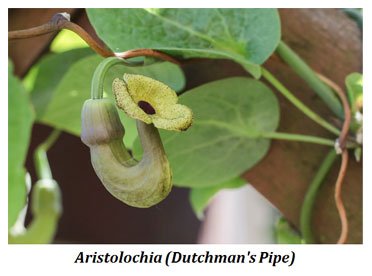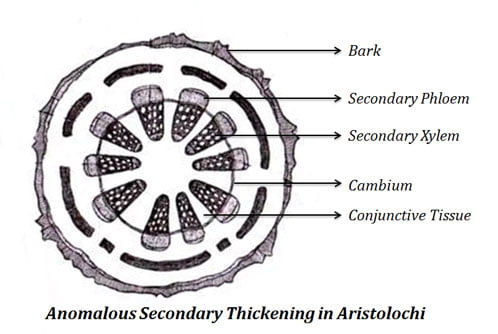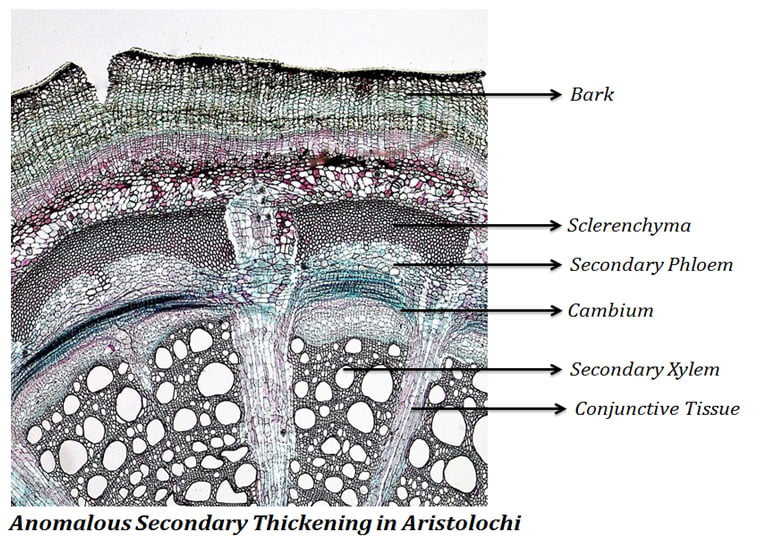Aristolochia (Family: Aristolochiaceae) is a climber and the pattern of secondary thickening in the stem of Aristolochia helps its twining habitat. In Aristolochia, the cambium is normal but showing abnormal activity. During the secondary growth, the normal cambial ring is formed by the fusion of fascicular and inter-fascicular cambium. However, the cambium forms vascular tissue only in the region of vascular bundles (region where the fascicular cambium was present). This type of anomalous secondary thickening usually occurs in woody climbers. The exact process of anomalous secondary growth in Aristolochia stem is summarized below.
Learn more: Dracaena Anomalous Secondary Thickening + PPT

Primary Structure of Aristolochia Stem
Ø The young stem is a typical dicotyledonous stem.
Ø Epidermis – single layered, parenchymaotus
Ø Hypodermis – multilayered, collenchymatous
Ø Cortex composed of chlorenchyma and sclerenchyma
Ø Endodermis is not very distinct in the stem.
Ø Pericycle is present and it is multilayered and prominent.
Ø Vascular bundles are conjoint, collateral, open and arranged as a broken ring.
Ø Vascular bundles are separated by inter-fascicular areas
Ø A median and two lateral leaf traces also present
Anomalous Secondary Growth in Aristolochia Stem
Ø The inter-fascicular and fascicular cambium fuse to form a complete cambial ring.
Ø The cambial ring cut vascular tissue in the fascicular region only. It cut secondary xylem towards the inner side and secondary phloem towards the outer side.

Ø The inter-fascicular region cut parenchymatous cells only towards the inner and outer side of the cambium.
Ø Thus after the secondary thickening, the cross section of the stem shows large ‘vascular bundles’ like secondary tissues.
Ø In mature stem, the pith and medullary rays are crushed due the growth of the secondary xylem.
Ø After sometime the pericycle breaks and the adjacent parenchymatous cells invade to the breaks by intrusive growth

Ø In the future, these parenchymatous cells become sclereids
Ø The fascicular cambium (cambium present in the bundle) may also behave abnormally and cut parenchyma cells internally, thus the xylem become fissured.
<<< Back to Plant Anatomy Notes
| You may also like... | ||
|---|---|---|
| NOTES | QUESTION BANK | COMPETITIVE EXAMS. |
| PPTs | UNIVERSITY EXAMS | DIFFERENCE BETWEEN.. |
| MCQs | PLUS ONE BIOLOGY | NEWS & JOBS |
| MOCK TESTS | PLUS TWO BIOLOGY | PRACTICAL |
